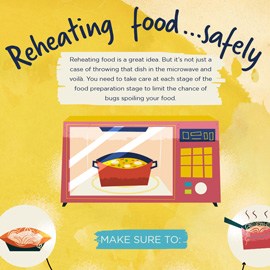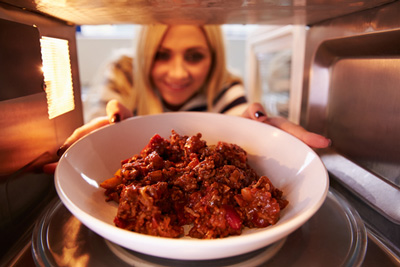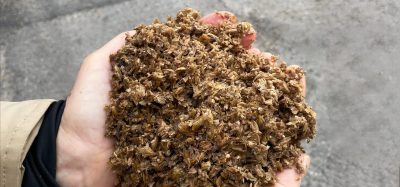Cut your food waste by freezing and reheating leftover food
- Like
- Digg
- Del
- Tumblr
- VKontakte
- Buffer
- Love This
- Odnoklassniki
- Meneame
- Blogger
- Amazon
- Yahoo Mail
- Gmail
- AOL
- Newsvine
- HackerNews
- Evernote
- MySpace
- Mail.ru
- Viadeo
- Line
- Comments
- Yummly
- SMS
- Viber
- Telegram
- Subscribe
- Skype
- Facebook Messenger
- Kakao
- LiveJournal
- Yammer
- Edgar
- Fintel
- Mix
- Instapaper
- Copy Link
Posted: 18 July 2016 | Lisa Farland, Happy To Survive | No comments yet
To help combat food waste, Happy to Survive have created an infographic on reheating food. Lisa Farland discusses more about reheating food here…


Every single year, about seven million tons worth of food and drinks are being thrown away from homes alone.


According to a research conducted by the Food Standards Agency, much of our food end up in the trash bins because a lot of us have misconceptions regarding freezing and refrigerating food. Those who were interviewed believed that food should only be frozen on the day of purchase; that meat should not be placed back in the freezer after cooking; and that some food becomes unsafe to eat when they are placed inside freezers.
In the UK, one household wastes an equivalent of six meals every single week which will definitely make a big dent on our pockets and also hurt the environment. Most people throw away bread, fruits, vegetables and leftover meals – and freezing, which is like a pause button, is just one of the things we can do to save our planet.
However, freezing and reheating food is more than just putting it inside the fridge or popping it into the microwave. It is a tricky thing to master but you will be properly guided using the infographic below.
Among the things you should remember is that hot food should be cooled first and not immediately sent straight into the freezer or fridge. On the other hand, if you plan to defrost food, only do it when and if you can consume it within 24 hours of fully defrosting it.
The fridge and freezer will be your partner in budgeting and saving money and time. Prepare your meals ahead of time and reheat them when you need to it – you no longer have to start from scratch.
Learning how to maximize the use of your freezer and fridge and knowing how to properly store your food will not just help retain its original flavors but also make it last much longer. You might just be surprised at the types of food that you can freeze!
|
Biography Lisa Farland is a content writer in Happy to Survive – a blog that will help you thrive and survive, and offers articles about preparedness, and off-the-grid, self-reliant living. Lisa is an avid minimalist camper, prepper and survivalist. |









